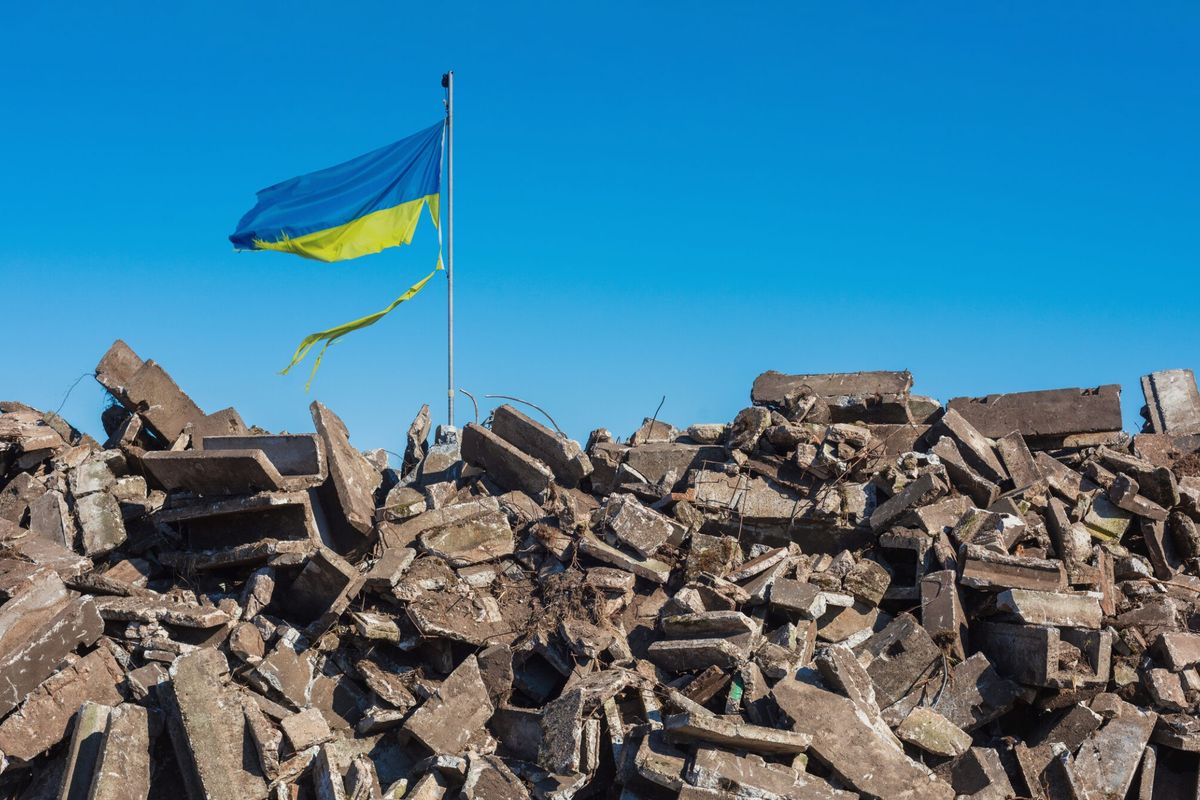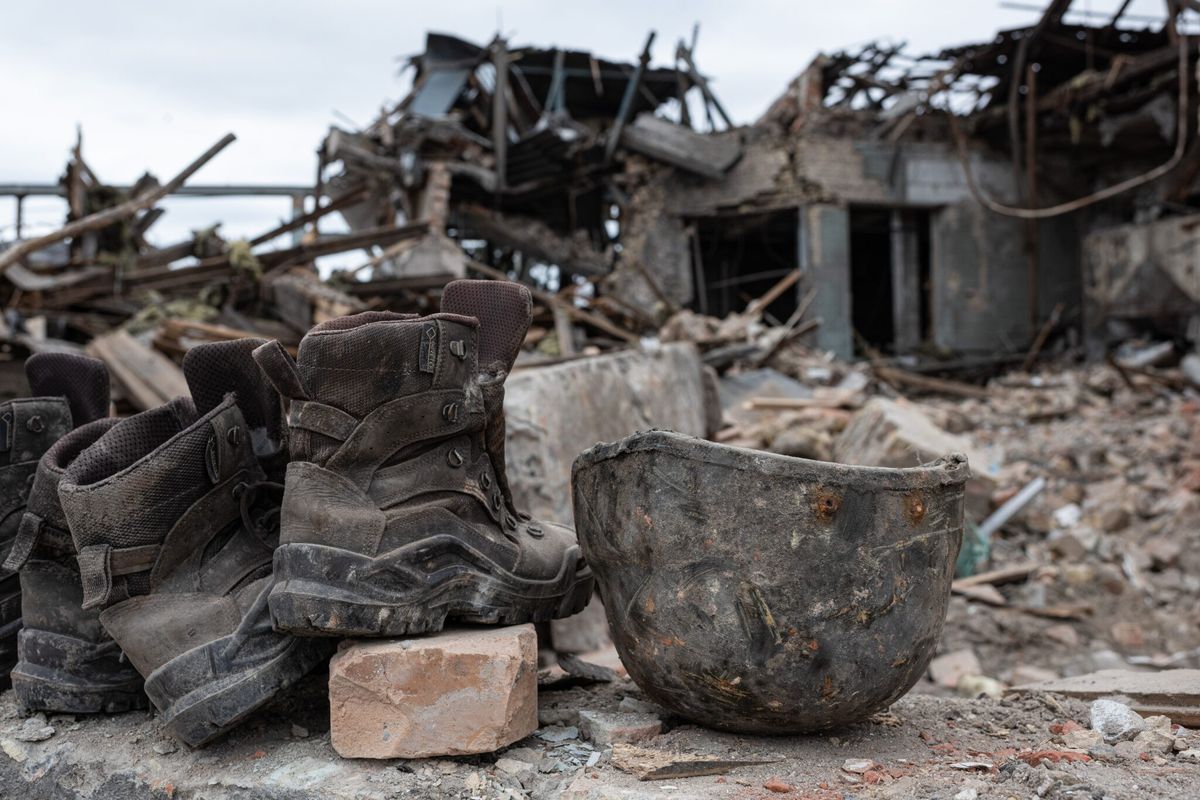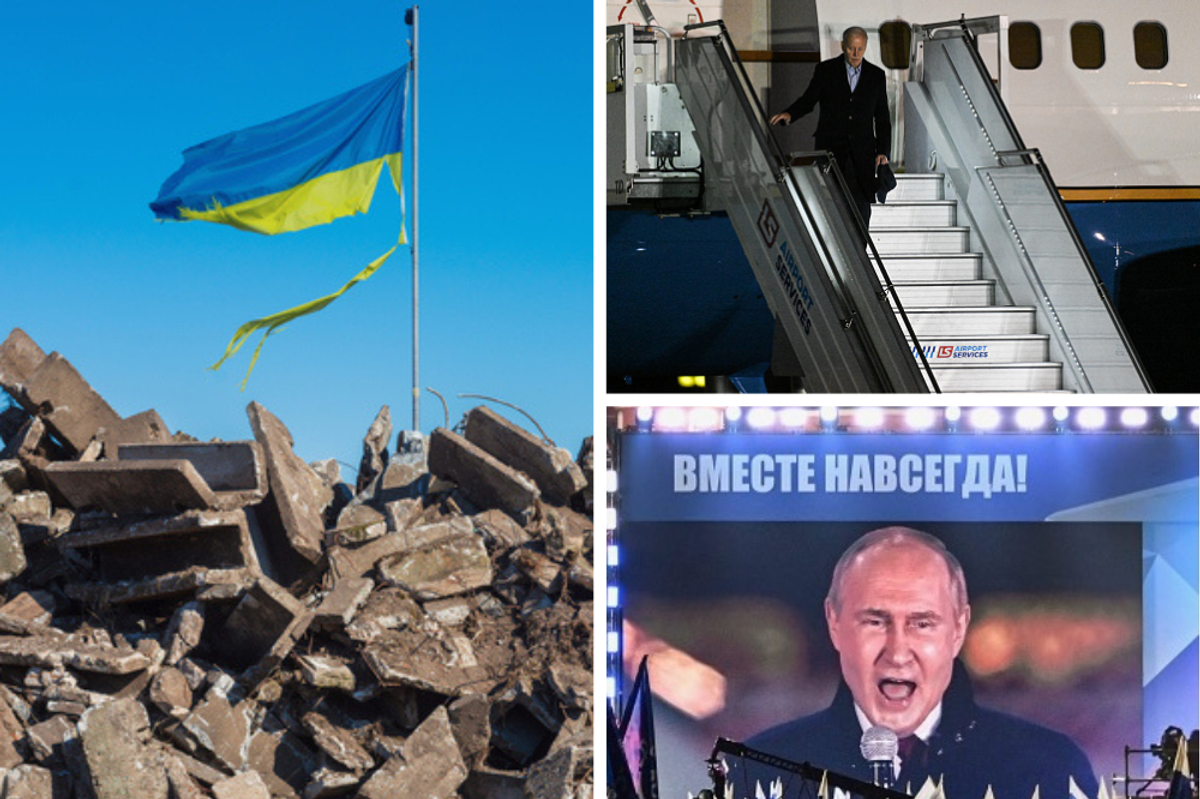The Cipher Brief sat down with Matt Olsen, the former director of the National Counterterrorism Center, to get his reflections on the events of September 11th, 2001 and hear his thoughts on the evolution of the terrorism threat.
The Cipher Brief: Where were you on September 11th and what do you remember most from that day?
Matt Olsen: On September 11th I was working as an assistant U.S. attorney, a federal prosecutor, at the federal prosecutor’s office in Washington, DC. At that time, I was working on a large gang case, and on the morning September 11th, I was at the federal courthouse interviewing a cooperating witness who was in custody. We were there with our FBI agents, and the Marshalls came into the room where we were conducting the interview and said everyone needed to get out of the building. In fact, right when that happened we could see, from where the federal courthouse is, smoke across the river at the Pentagon. The Pentagon had already been hit and they were evacuating the courthouse. Outside, the streets were full of government and private sector employees trying to figure out what was going to happen next. What I remember most about that day and the immediate aftermath of September 11th was being very glad that I was working in the government at the time. There was a palpable sense of the importance of service and that our country had been attacked, and it was an extremely meaningful time to be working for the good guys. I remember talking to friends of mine who had been in the US attorney’s office who wanted to come back to the government because of the sense of mission and purpose that we all had at the time. Even if you weren’t working in the military or in national security, you felt like you wanted to return to having that sense of mission, of being part of something bigger at a time when our country was being attacked.
TCB: You served under both Presidents Bush and Obama. Under Bush you held senior positions in the Department of Justice and under Obama you were Director of the National Counterterrorism Center (NCTC). You straddled administrations with very different views of the legal basis for the war on terror. What was that like and how have politics shaped the debate around the War On Terror?
MO: In 2004, I went over to the FBI and started working on national security issues as counsel to the FBI director. I was like a lot of folks who transitioned from non-national security jobs to national security jobs after September 11th. The FBI work was extremely rewarding, and I’ve basically stayed in the national security field since that time. Following my work at the FBI, I went on to work at the Justice Department under the Bush administration overseeing the Justice Department’s intelligence programs through 2009. Then with the Obama administration, I worked on Guantanamo and at NSA as general counsel and then at NCTC.
My national security work has straddled both the Bush administration and the Obama administration, so I’ve had a fascinating vantage point to see the transition from one administration to another. Around the campaign of course and around aspects of the debate, there’s a lot of rhetoric and arguments about the War On Terror and our counterterrorism efforts. But from my perspective, there was a great deal of consistency and stability in how we went after terrorism and how we managed our counterterrorism efforts from one administration to the next. In the day-to-day role and work of intelligence and national security professionals, politics plays effectively no role. Even across administrations, politics is less of an issue than the rhetoric might lead you to believe. That is not only the way I saw it, but that’s also the way it should be in my view. It’s a positive thing to have consistency and stability around work that should be outside of politics and really largely it was.
An example of this consistency was our surveillance programs. From the time I was at the Justice Department with the Bush administration throughout the time I was at the Justice Department under the Obama administration, we conducted those surveillance programs the exact same way. In other words, in both administrations, we were worked on the bulk data collection under Section 215 of the Patriot Act. Under the Bush administration, we changed the law to facilitate the targeting of non-U.S. persons overseas under the Foreign Intelligence Surveillance Act. These collection programs that took place before President Obama came into office and the President kept these programs in place, along with some incremental changes. This was a very important for the intelligence agencies, such as NSA, CIA, and FBI, which were responsible for implementing those programs. Another example is the prosecution of terrorists. Again, there’s been lots of rhetoric around this, but the fact is that the norm under the Bush administration and under the Obama administration is that terrorists are prosecuted under the criminal justice system. That was the most effective way of taking terrorists off the streets under the Bush administration and obviously that remains the case today. So what you see is an approach where intelligence professionals use all tools available, without consideration of politics or ideology. That’s what the American people expect professionals in the government to do – use every tool and use them to maximum effectiveness to protect the country.
The one place where I do think you have seen some change from one administration to the other is the interrogation of terrorists. You definitely saw that with the President right after he entered office with the executive order on interrogation, making it clear that enhanced interrogation techniques would not be used going forward. That’s a significant change from one administration to the next, and was largely supported in the intelligence community. It wasn’t necessarily a political move; it was viewed largely as the right thing to do.
TCB: Given the roles that you’ve served in, you have been able to see the terrorism problem from both the law enforcement and intelligence point of view. Rhetoric suggests that there is an either/or between law enforcement and intelligence. What’s the right approach to combating terrorism?
MO: The question whether counterterrorism is a law enforcement problem or an intelligence problem really poses a false choice. What’s required, of course, is both of those approaches. Law enforcement and intelligence are tools or complementary systems that we have developed in this country – better than anyone else in the world - to go after terrorists. They work in concert with other tools – military, diplomacy, ideological. It takes all of these tools working together to really be effective. We can swing one way or another on how much we emphasize one of these approaches and obviously there is debate on the margins, but both law enforcement and intelligence, as tools, have demonstrated that they are essential to fighting terrorism and that they actually support one another. One example is the capture and prosecution of Abu Khattala, one of the individuals allegedly responsible for killing Americans in Benghazi in 2012. The Abu Khattala case was largely built on intelligence information through the work of the intelligence community, identifying him as a prime suspect in Benghazi. His capture was then carried out by the Department of Defense and our military forces with incredible effectiveness. He was picked up and whisked off to a US naval ship in the Mediterranean. Now he awaits trial in federal court in Washington, DC. So you see all of those tools – intelligence, military, and law enforcement – working together extremely effectively in that case.
TCB: You also worked on the Guantanamo Review Task Force. What are your thoughts on the challenges of closing GTMO?
MO: In 2009 and 2010, I led an interagency review of all of the detainees – at that time, around 240 – who were at Guantanamo. We looked at their files and all the information available on each individual and determined what the appropriate disposition was for each – whether that was a transfer, prosecution, or continued detention under the laws of war. That review was a necessary step to achieving the goal of closing GTMO. The bottom line, in my view, is that Guantanamo should be closed. It’s an expensive facility to run and continues to be a tool that’s used for propaganda. It’s certainly not the only tool, but it is still used as propaganda by terrorists. It’s no accident that ISIS forces its hostages to wear orange jumpsuits that evoke the images of GTMO.
There has been a lot of progress toward closing GTMO over the last few years. The GTMO population is being whittled down and will eventually reach a number that will be small enough to allow the U.S. to close the facility. Today, there are still a number of individuals and detainees who are extremely dangerous and who are unable to be prosecuted due to a lack of evidence that can be used in a trial, whether that trial is a military commission trial or a federal trial. To ultimately close Guantanamo, that will probably mean housing some dangerous detainees at a secure facility in the United States. There is no doubt that we could house these individuals securely here, but that is a very hotly contested political issue and that fact makes it very difficult to achieve the goal of closing GTMO.
The other complicating factor is the fact that a large number of the detainees are from Yemen. And as the security situation in Yemen continues to deteriorate; it makes it very difficult to repatriate those detainees even though many of them pose a lower level of threat than the more dangerous detainees at Guantanamo.
TCB: You took over NCTC at a very interesting time. Core al Qaeda was on the ropes and ISIS was on the rise. What was it like to manage that transition?
MO: During my time at NCTC, there was a fundamental shift in the nature of the terrorism threat from an emphasis and focus on core al Qaeda – which was increasingly hunkered down in tribal areas in Pakistan with fewer and fewer leaders and operatives – to having to look at a much more diverse and expansive threat, as the number of groups that followed al Qaeda’s ideology or were aligned with al Qaeda grew and expanded geographically. That, of course, is best represented by ISIS, which took advantage of the conflict in Syria and the lack of effective Iraqi governance to come on the scene over the last two years, and to take territory and carry out extreme acts of violence against Westerners, but primarily against other Muslims in Syria and Iraq.
So the question was from the perspective of NCTC, how do we react to this shift, particularly as it relates to the threat that these groups pose to us in the U.S.? I would look back at a few things we focused on during my last couple years at NCTC. One was really cementing the relationship that NCTC had as a partner with the FBI, and then enhancing our working relationship through the FBI with state and local police departments. There was a significant recognition that the state and local police officers around the country, who are the front lines of any acts of violence, are going to be in the best position to stop one of these homegrown terrorists, possibly motivated by ISIS, from carrying out an attack. We wanted to make sure they had all of the analytics and the know-how that we could provide, working with FBI, to enable them to see the signs of radicalization, for example, and to stop an attack before it occurred.
Another area of emphasis was to continue to increase our ability to analyze the enormous amount of data that we had access to. We had spent several years at NCTC gaining access to data. And now the challenge that we faced was to make effective use of it. We needed to be able to find the piece of intelligence that would enable us to provide a tip to the FBI, for example, that there was a lead to follow up on and that they could then act on. We had access to enormous amounts of data, and with the enhanced power of computers, we made real strides with our ability to make sense of that data.
Finally, one of the key points of emphasis was the ability to recruit and retain the best counterterrorism analysts and planners in the world to work at NCTC. And they needed to have a diverse range of skills that allowed them to be as agile and adaptive as our adversaries. That’s what was going to carry NCTC forward into the future against a very dynamic threat landscape.
TCB: Are there any lessons we can learn from the campaign against core al Qaeda that can be applied to ISIS?
MO: We have gotten very good at going after leaders of a terrorist organization, such as al Qaeda, and we’ve learned that this tactic can be an effective part of our counterterrorism strategy. Just as we eliminated the vast majority of leaders of al Qaeda through our counterterrorism pressure, we should be taking the same course of actions against ISIS. That can have a devastating effect. Perhaps not a dispositive impact, but it can be devastating for a group like ISIS. We should continue those aggressive actions and eliminate their leaders.
Another lesson, perhaps more sobering, is that we won’t achieve our goal of destroying ISIS in a short period of time. It takes a sustained effort over years to take out a group like ISIS so that they don’t pose a threat to the U.S. or to the West more generally. There is an endurance factor that we need to take as a lesson from our counterterrorism experience going after core al Qaeda.
TCB: Do you think persistent violence from homegrown threats is a problem that we will have to live with indefinitely?
MO: We should never feel that the types of threats we see from ISIS are anything we should have to accept. It’s certainly not acceptable for a group to espouse and carry out the types of violence that ISIS conducts. We should reject it in no uncertain terms. And we need to go after it with all our tools. One tool that we have to develop further is our ability to counter their ideology, because what we see with ISIS is that they’ve adapted to our defenses after September 11th. They are now using the internet to essentially crowd-source terrorism and reach into our communities and homes to seek to motivate people to carry out attacks – people who for whatever reason are susceptible to their warped message. We need to counter their message through a range of tools so that people who might be susceptible have an alternative message that they see.
We also have to make sure that the FBI has the intelligence tools it needs. This is part of the ongoing debate about surveillance and civil liberties. To be effective, the FBI is going to need to be able to see and hear about these plots before they occur. We need to be committed to ensuring that the FBI and local law enforcement have the tools they need to go after ISIS, as it seeks to recruit people here in the United States. Over the short term at least, we will continue to see smaller scale types of attacks, individuals acting alone or perhaps in very small groups, that will be inspired by ISIS. These are not necessarily ISIS run plots, but they are inspired by ISIS. We are probably going to see that over the next year or more. This bring me back to my initial comments: We need to double down on using all of our tools, law enforcement, intelligence, and military to go after ISIS and achieve the goal of ultimately destroying the group.












